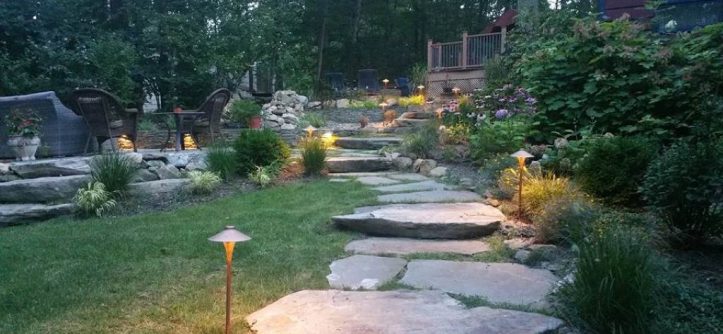Picture this: you’ve just moved into your dream home, but the yard looks like a blank canvas waiting for the right artistic touch. The difference between a stunning landscape that increases your property value by up to 15% and a forgettable outdoor space often comes down to one crucial decision – selecting the right trees and shrubs. With thousands of plant varieties available and countless factors to consider, making the wrong choice can result in years of frustration, unnecessary maintenance costs, and disappointing curb appeal.
Understanding Your Yard
Good landscaping starts with knowing your yard. Check your soil, climate, and sunlight to pick plants that grow well.
Walk your yard at different times to see sunlight. Note spots with full sun (6-8 hours), partial shade (3-6 hours), or full shade (less than 3 hours). This helps you place plants where they’ll thrive.
Test your soil with a kit from a garden center or get help from a local extension office. Know your soil’s pH, drainage, and nutrients to choose the right plants.
Climate and Hardiness Zones
Your area’s climate and USDA hardiness zone matter. Plants must handle your local weather, like cold, heat, or humidity.
Find your hardiness zone and pick plants rated for it or one zone colder for safety. Check for microclimates, like warm walls or frosty low spots.
Think about wind, storms, drought, or heavy rain. Native plants often do best since they’re used to local conditions.
Setting Landscape Goals
Know what you want: privacy, beauty, wildlife, or low upkeep? Your goals shape your plant choices.
For privacy, evergreens give year-round cover. Deciduous plants change with seasons but may leave gaps in winter. Fast growers like Leyland cypress work quick but need more care.
For beauty, think about flower colors, leaf changes, and plant shapes. Choose plants that bloom at different times for year-long color.
Size and Growth Planning
A common mistake is ignoring how big plants get. A small shrub can grow huge and block views or crowd spaces.
Check mature height and spread. Think about nearby buildings, power lines, or paths. Pruning helps, but fighting a plant’s nature is hard work.
Fast growers give quick results but may outgrow spaces. Slow growers take time but often need less care long-term.
Care and Maintenance Needs
Be honest about how much time you have for yard work. Some plants need lots of pruning, fertilizing, or pest control.
Drought-tolerant plants save water and money. Native plants need less care once settled since they fit your area’s conditions.
Think about seasonal tasks like spring pruning or fall cleanup. Some plants drop leaves or fruit that need regular cleaning.
Soil and Growing Conditions
Match plants to your soil for best results. Changing soil is hard, so pick plants that like what you have.
Drainage matters. Some plants hate wet roots, while others love moisture. Check if your soil is clay, sandy, or in between.
pH affects plant health. Acid-loving plants like azaleas do poorly in alkaline soil. Pick plants that match your soil’s pH.
Year-Round Beauty
Choose plants for beauty all year. Spring bloomers like dogwood are great, but add plants with winter bark, fruit, or evergreen leaves.
Look for fall color or winter shapes. Evergreens keep color in dull seasons. Mix bloom times for color from spring to fall.
Budget and Plant Costs
Trees and shrubs are big investments. Bigger plants cost more but give instant impact. Smaller ones save money but take time to grow.
Think about long-term costs. High-care plants may need pro pruning or pest control. Low-care plants save money over time.
Making Your Plant Picks
With your yard info and goals, pick plants. Visit local nurseries to see them in person and ask about care and growth.
Buy from local nurseries for plants suited to your area. They often offer guarantees. Start with big plants, then add smaller ones as you can.
Start Your Yard Makeover
Picking trees and shrubs is easy with a plan. Know your yard, set goals, and choose plants that fit your climate and care needs. You’ll get a beautiful yard that adds value.
Start your site analysis this weekend. Visit a garden center to find plants for your yard. Share your plant picks and tips in the comments!
Read Also:
How to clean glass oven doors miele
FAQs
How do I know my USDA hardiness zone?
Check your zip code on the USDA website to find your zone. Pick plants rated for it or one zone colder.
What’s the best time to plant trees and shrubs?
Spring or fall are best. Cooler weather helps roots grow before summer heat or winter cold.
How can I test my soil at home?
Buy a soil test kit from a garden center. Follow instructions to check pH, nutrients, and drainage.
Should I choose native plants?
Yes, native plants suit your area’s conditions, need less care, and support local wildlife.
How do I plan for year-round yard beauty?
Mix plants with different bloom times, fall colors, and evergreen foliage for interest all year.

Leave a Reply
Cancel reply